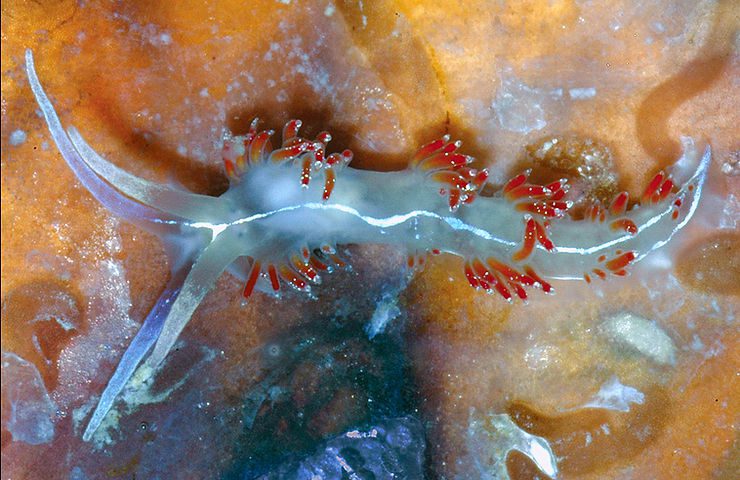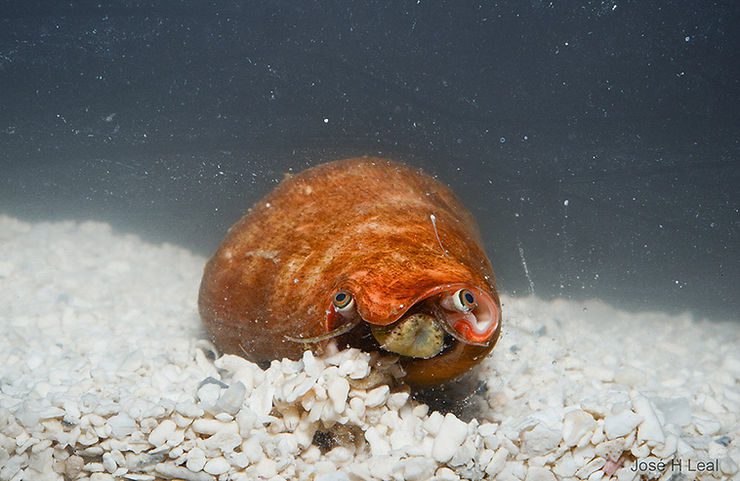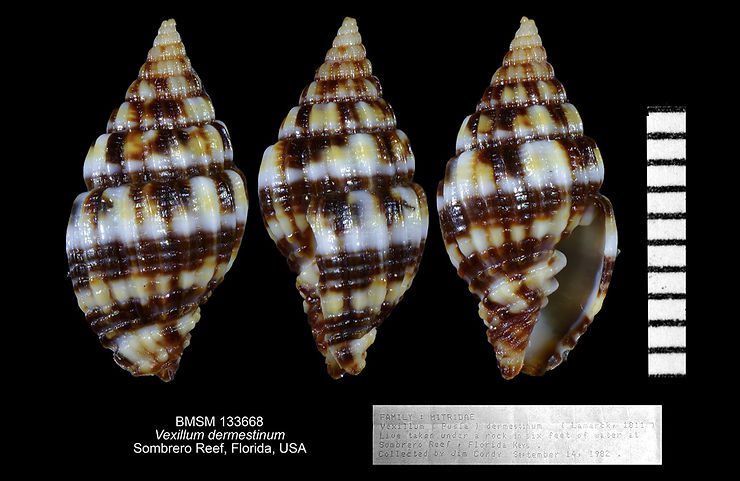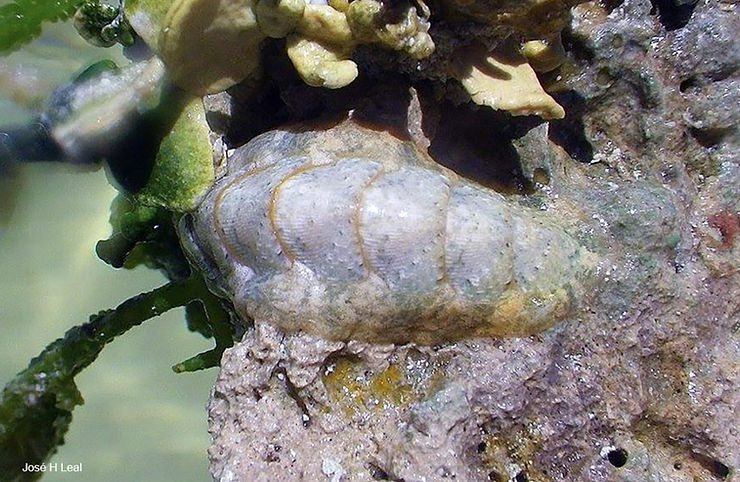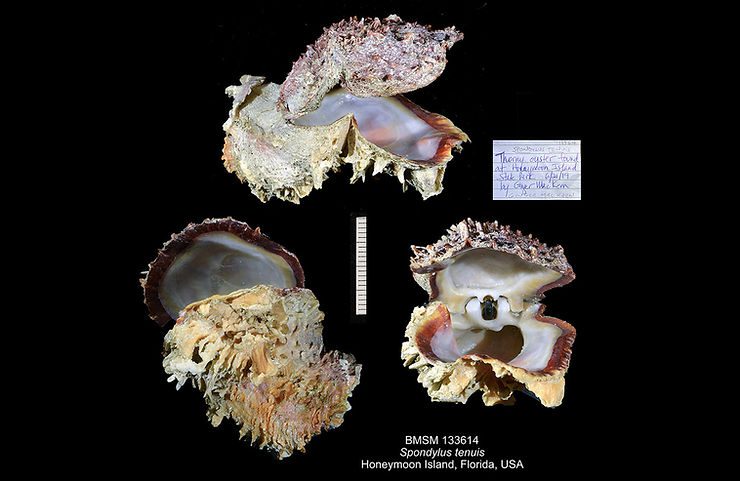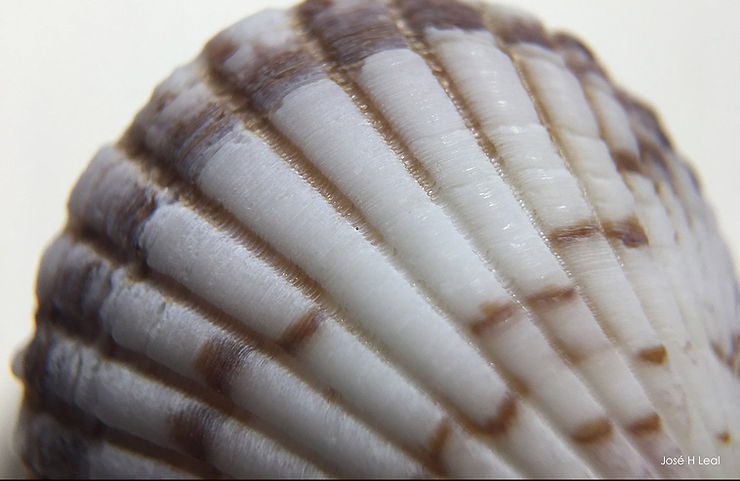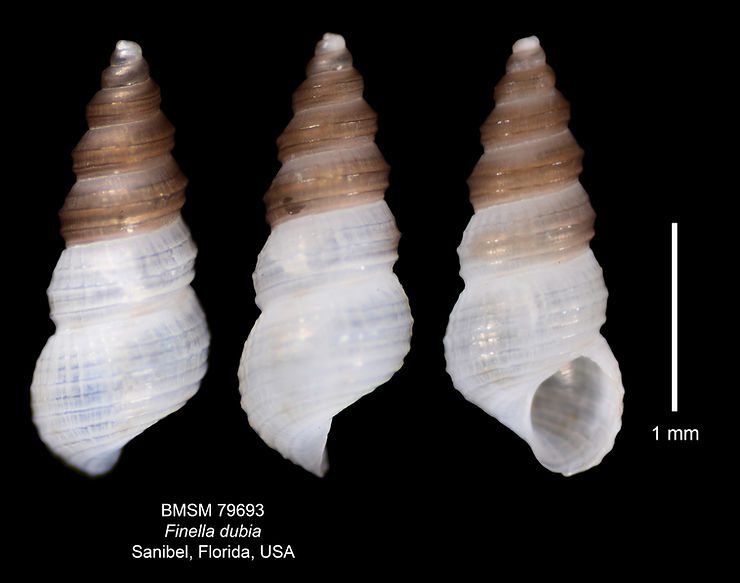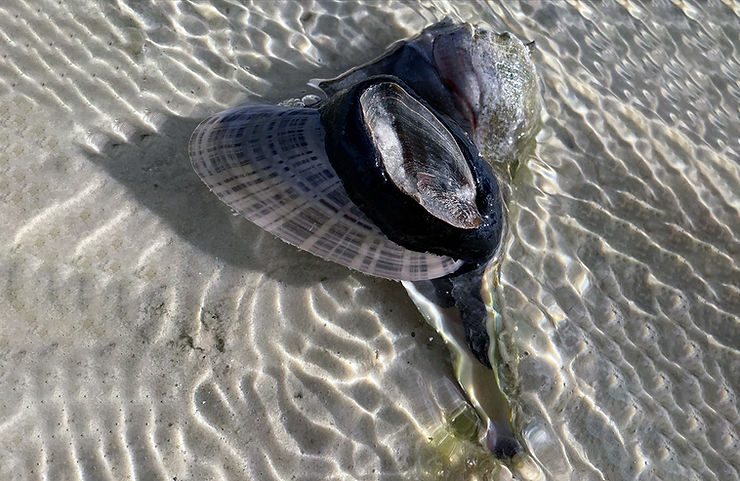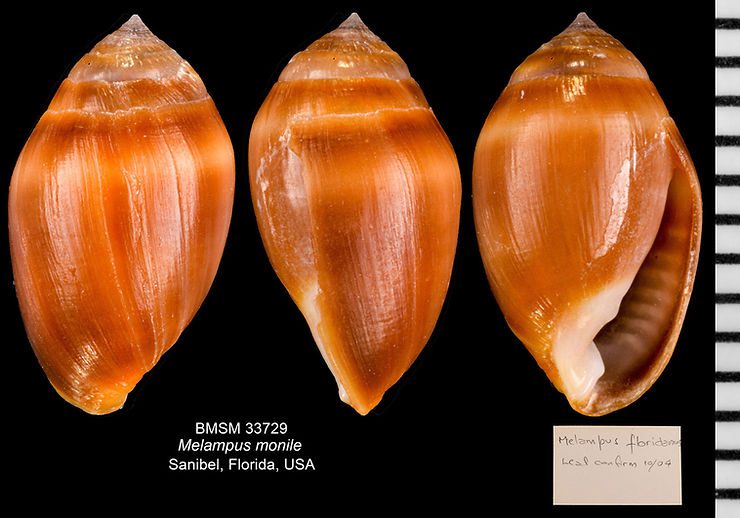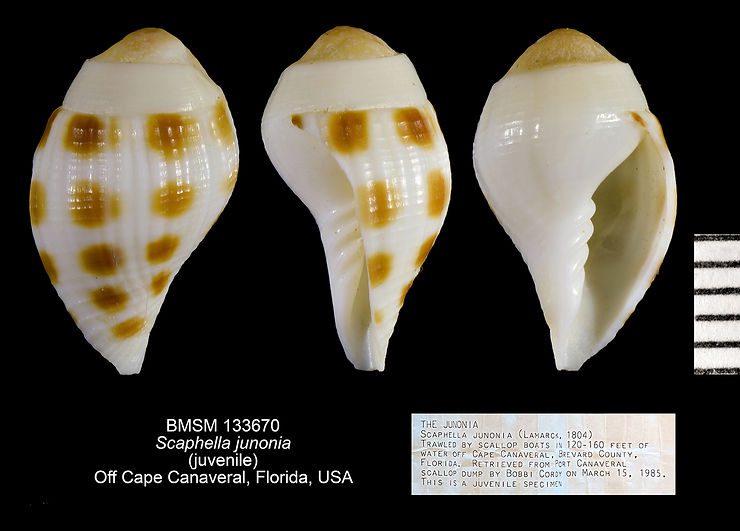
Shell of the Week: A Juvenile Junonia
This 12 mm (about 0.5 inch) Scaphella junonia already has the trademark brown spots that tipify the adult shells of the species. The young shell, however, has a reticulated (net-like) surface sculpture that is absent from the adult shell. Read more about the Junonia at https://tinyurl.com/a8dv8kkc. #scaphellajunonia #junonia #juvenilejunonia #capecanaveral
